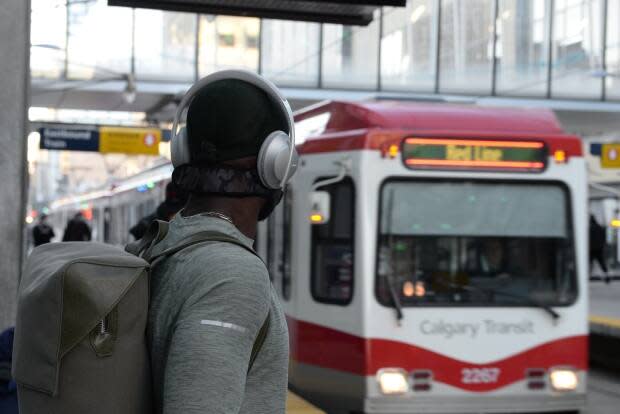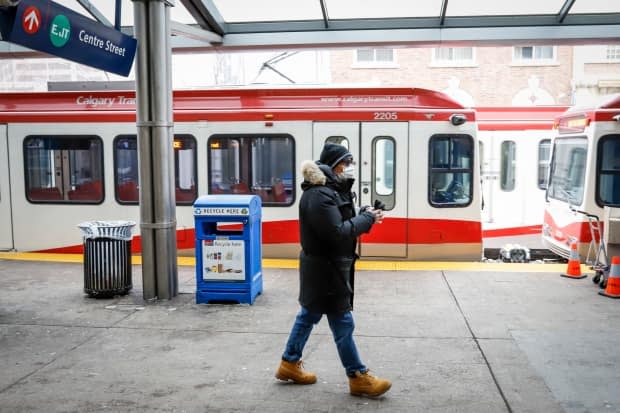Transit union says excessive overtime, overloaded buses signal need for change

The union representing Calgary's transit workers says despite an overall drop in ridership, a steady number of operational issues indicate a need to bring back some of the transit workers laid off last spring.
Mike Mahar, president of Amalgamated Transit Union Local 583, says staff are complaining about too much overtime, too many overloaded buses and sporadic bus breakdowns that lead to "no shows" because there's no one to backfill.
Mahar said within the last week, a charter transit bus ran into problems and left students at a high school scrambling to find another way home.
"Normally Calgary Transit will have, you know, five or six or seven people on what they call standby, and as soon as the bus breaks down, they dispatch another bus with another driver," he said.
"They can't do that when they've maxed themselves out, there's just no resources left."
Approximately 450 workers were laid off last spring and routes were scaled back or temporarily suspended after revenues and ridership plunged due to COVID-19.
Mahar said some of the laid off workers have already been brought back, but he believes more need to return — especially considering concerns around health and safety with respect to the pandemic.
Stephen Tauro, a spokesperson with the city, said Calgary Transit is monitoring the situation and called the "no show" incident involving a high school charter bus a one-off.
Tauro said ridership is only 25 per cent of what it was pre-pandemic, yet service levels are at 82 per cent.
He said if they see a significant increase in ridership, they'll boost service levels.

Tauro added that according to the city's ongoing citizen satisfaction surveys, 85 per cent of riders say the service is meeting their needs.
"So it's really a balancing act and being responsible with the tax dollars and ensuring that we can use those dollars to the best of our ability to meet the customer needs," he said.
Transit overloads
Mahar said the city sends him copies of the daily overload reports and lately he said he's been noticing reports of 50 or more overloads every day.
Mahar shared a week's worth of the overload reports with CBC News which support that assessment.
Pre-pandemic, a bus was considered overloaded if it reached 100 per cent capacity. During the pandemic, it has been lowered to 75 per cent capacity.
When a bus is considered overloaded, the driver feels it's too full to pick up additional riders, so the length of time can vary depending on when people exit the bus.
Mahar said there were reports of bus overloads pre-pandemic but he alleged the numbers are consistently up right now on some routes, especially during peak periods.
He said drivers have a plastic shield and passengers must wear a mask, but said not everyone feels safe behind those barriers, nor always wears a mask.
One rider who spoke to CBC News through social media said the bus she takes is usually packed, which she said doesn't make sense.
"Calgary Transit still thinks it's okay to allow 70 people on the bus when there's only 36 seats [on a regular bus] and most people are not wearing masks," said Megan Mary, who is a regular transit rider.
"If my place of work did that, or if I gather in my home or outside with 70 [or more] people, we'd be fined and closed down for not following public health regulations."

Tauro said the reports shared with CBC News are raw data that require further investigation to see if they represent consistent issues that require a service change.
He said if overloads happen on a consistent basis, then they will respond by adding another bus, increasing the frequency of the service or adjusting the size of the bus.
In that case, he urged drivers and passengers to notify Calgary Transit every time a bus is too full so the city can see if any patterns emerge.
Increased overtime
Mahar said he's been tracking the overtime and double time logged by his members after drivers started complaining about their workload over the last three or four months.
He said overtime is an acceptable solution when it's used correctly, but said drivers are asked to do overtime too often to cover staffing shortages, which he said leads to burnout.
"There's a lot of them that don't want to work overtime and they certainly don't want to work 10- and 12-hour days," Mahar said.
But despite the complaints, Tauro said his records show overtime hasn't gone up in recent months.
CBC News tried to compare the total number of overtime and double time hours sent by Tauro, which compared January 2020 to January 2021, with several overtime sheets sent by Mahar.
However at the time of publication, CBC News couldn't confirm whether drivers are being asked to do more overtime at this time.
Tauro said there are a number of factors that go into the decision to use overtime — like budget, operator availability, the "sick" list and the schedules.
"It's really hard to just pinpoint one consistent issue and I think we are using some operators in overtime. Is it excessive?" Tauro said. "No, but we're just trying to ensure we're meeting the service that customers expect."
But Tauro said the bottom line is Calgary Transit is about customer service, and so far, he said, it seems customers are satisfied.
Mahar said he realizes there are budget constraints and that ridership is down, but he said those who are still using it and providing it should be better supported.
"During a pandemic I think they need to promise a safe ride that is as safe as it can possibly be while still providing service," he said.
He said the buses should be better spaced out, as they were when the pandemic first hit.
Calgary Transit initially blocked off every second seat due to COVID-19.
Last August, it removed the seating restrictions because it said the mandatory face covering bylaw would keep riders safe when they couldn't distance.

